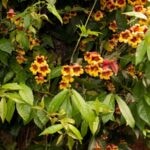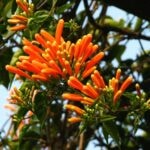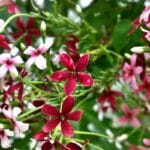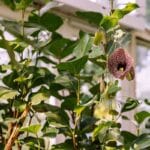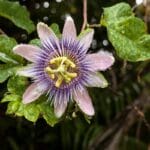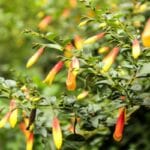Adding flowering vines in a landscape help develop the visual appeal while attracting wildlife. The dipladenia plant is one of the famous flowering vines that adds the pop of color and is a welcoming plant for birds and butterflies.
Read on to learn more about this magnificent plant.
Botanical Information
The dipladenia plant or the Brazilian jasmine formerly had the scientific name Dipladenia sanderi (Rio dipladenia) but is now updated to Mandevilla sanderi. It is a member of the Apocynaceae family and is an angiosperm, meaning it bears flowers that contain seeds in its carpels.
Spatial Distribution
This tropical vine is a native of Brazil and thrives in USDA zones 9 to 11. In some cases, this vine survives in zone 8. However, their growth will not be optimized because the environmental conditions are different from what it is accustomed to.
Growth Habits
The dipladenia plant is a woody vine that mimics the appearance of a bush. When planted in the correct USDA zones, it can reach up to 10 feet in height and 4 feet in width.
It is an evergreen vine that creates beautiful flowers, which attract hummingbirds and insects. Aside from being an excellent source of color in the garden, it is also a houseplant for some.
Differences between Dipladenia and Mandevilla
There are species under the same family and genus that are often interchanged and misidentified. These are the dipladenia plant and the mandevilla vine, which both produce attention-grabbing flowers.
The confusion is highly likely to happen from the common names themselves. However, one must keep a keen eye on the differences. First, the main difference between the two plants is their growth habit.
The dipladenia plant tends to grow bushier, while the mandevilla vines crawl and climb. Then, they differ in terms of the appearance of their leaves and flowers. The mandevilla plants have bigger flowers and broader foliage.
Moreover, the best way to distinguish which is by having a deeper knowledge about them. The succeeding parts of this article will help shed some light on the dipladenia bush.
Stem
The dipladenia plant has a green succulent stem with milky sap. As the plant matures, the stem becomes woodier to provide more structural support.
Leaves
This woody vine’s leaves are dark green, glossy, wrinkled, broad, and oblong with tapered tips. Dipladenia leaves extend for 3 to 8 inches long and is arranged alternately on the stem, making a dense appearance.
Flowers
As the main attraction, the dipladenia plant blooms tubular showy flowers. It has 5 lobes that vary in color depending on the variety, either pink, red, white, or yellow. The flowers often have a distinct color in the center, sometimes yellow or red.
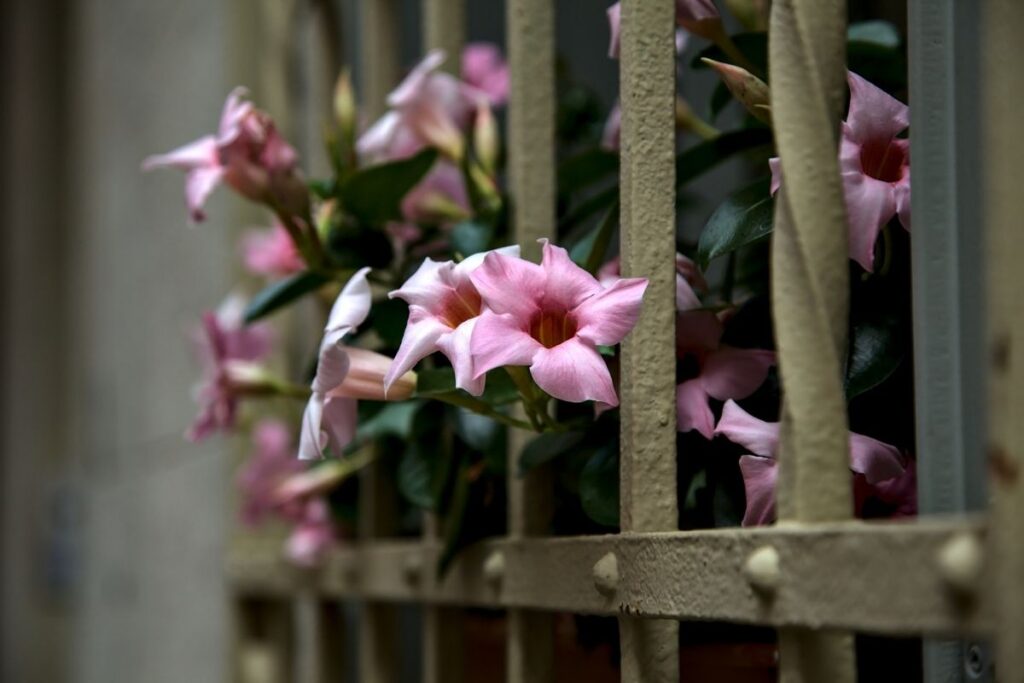
Grow and Care Tips
Sun Requirement
As a tropical plant, this vine will optimize its growth when planted under full sun. It may be a houseplant and tolerate partial shade. It is best to bring the entire plant inside and put it in front of a sunny window.
However, exposing the plant to uninterrupted direct sunlight between six and eight hours daily will promote flower formation.
Water Requirement
Average amounts of water should be supplied to the plant. Moreover, the watering schedule should change as the season progresses. During hot summer months, water this plant frequently to make sure that the soil does not dry up. On the other hand, less frequent watering should be done during the winter months.
Temperature and Humidity
The Rio Dipladenia vine thrives in warm temperatures ranging from 10 to 30 degrees celsius. In colder temperatures, the plant starts to slow down its growth, making it semi-dormant.
Soil Requirement
The best soils for this vine are those with good drainage and water holding capacity, rich in organic material, and alkaline or neutral. Having good drainage is vital to avoid root rot. Moreover, the plant needs enough space to grow, and planting them with 3 to 6 feet by 6 to 12 feet planting distance is the best.
The vine is fast-growing, and constricting its space will result in more problems in the future.
Fertilizer Requirement
Fertilizing Dipladenia application is not a must, aside from the annual application of complete fertilizer to replenish soil nutrients. During the growing season, feed your dipladenia plants with a liquid plant food every three to four weeks.
However, one must be cautious in applying nitrogen-rich fertilizers as they may inhibit the growth of flowers and promote the production of more leaves.
Phosphorus-rich fertilizers, on the other hand, may help in flower production. Remember to apply the recommended rates indicated in the fertilizer labels.
Maintenance Activities
Aside from regular watering, pruning and providing structural support are also necessary. Removal of dried and damaged plant parts will help the plant become less susceptible to diseases, which is why this should be scheduled regularly. Also, cutting back the plant after flowering will help replenish the plant. Keep in mind that this plant produces a milky plant sap.
Furthermore, pinching is done to promote bushy growth for the actively growing plant. Along with this activity, providing a stake or trellis for anchorage
Propagation
The dipladenia bush is propagated through stem cuttings. Some of the things to consider before harvesting the cuttings are the availability of stems that are of the right age and thickness. Moreover, it is also important to prepare the planting medium.
Either seedbeds or plant pots are suitable for planting as long as the soil is rich in organic matter, has good drainage and water retention. In terms of the environmental condition, the best temperature for propagations is around 70 to 74 degrees Fahrenheit, with ambient conditions.
Misting is the preferred method of watering for the cuttings to have a uniformly distributed water supply. Also, the application of rooting hormones will help the cutting develop a root system faster.
Usually, it takes 4 to 6 weeks for root development. However, plant growth regulators, such as auxin, will give a shorter time for the plant to develop roots.
While the dipladenia plants are still young, they may be trained to grow upright by providing structural support. However, pinching the tips of the stems will induce lateral growth, which will yield a fuller and more dense appearance.
Function In The Landscape
As a versatile vine, the dipladenia is incorporated into the landscape in different ways. Some of its uses are for the screen, green wall, privacy, accent, border, and foundation plant. Also, it may be planted directly to the ground and let crawl onto fences, trellises, and arbors. Some grow them in pots with stakes and wires to train them to a specific form and shape.
In natural themed landscapes, they are left to grow and spread in whichever direction they please as long as the other plants are not disturbed.
These flowering plants are a suitable addition to landscapes where people are often present, like parks and gardens. Its beautiful and showy flowers served as an attraction, not only to humans but also to wildlife, like bees and birds.
The dipladenia is also a good plant for green walls and vertical gardens. Thanks to its dense leaves and colorful flowers, it can serve as a good backdrop, same with serving as a privacy screen or shade.
Potential Harm
Relatively, the dipladenia plant is low maintenance, and pests and diseases are not that common. However, there might be a presence of some mealybugs, aphids, and scale insects. If this happens, washing the plant with soap and water is one of the quick home remedies.
The use of insecticidal soap and other pesticides is a control measure when the infestation worsens.
FAQs
Should Dipladenia be cut back?
Yes, Dipladenia can benefit from pruning to encourage bushier growth and enhance flowering. It’s generally a good practice to cut back leggy or overgrown stems in early spring to maintain a more compact and well-shaped plant.
Why are the leaves on my Dipladenia turning yellow?
Yellowing leaves on a dipladenia may be due to various factors, including overwatering, underwatering, nutrient deficiencies, or pests. Assess the plant’s watering schedule, soil conditions, and overall health to identify and address the specific issue causing the yellowing.
Does Dipladenia need support?
While young Dipladenia plants may need some support to establish themselves, mature plants typically have a bushy and self-supporting growth habit. Providing a small trellis or stake during the initial stages of growth can help guide the plant.
Is Dipladenia a climber?
No, Dipladenia is not a natural climber like some other vining plants, but it can display a somewhat sprawling or trailing growth habit. It benefits from light support, especially when young, to encourage a more upright form.
Can Dipladenia be grown in pots?
Yes, dipladenia can be successfully grown in pots. Container gardening allows for better control over soil conditions, drainage, and provides flexibility in moving the plant to different locations based on sunlight and temperature preferences. Ensure the pot has drainage holes, use well-draining soil, and be mindful of watering practices to keep the plant healthy in a pot.
Final thoughts
With its vibrant blooms and captivating fragrance, the Dipladenia vine is a true gem for any garden. By following these simple Dipladenia plant care guidelines, you can cultivate a thriving Dipladenia that will grace your space with its beauty and delightful aroma for seasons to come.
See more creeping plants you can grow.
References
*image by nicolariccimn/depositphotos

